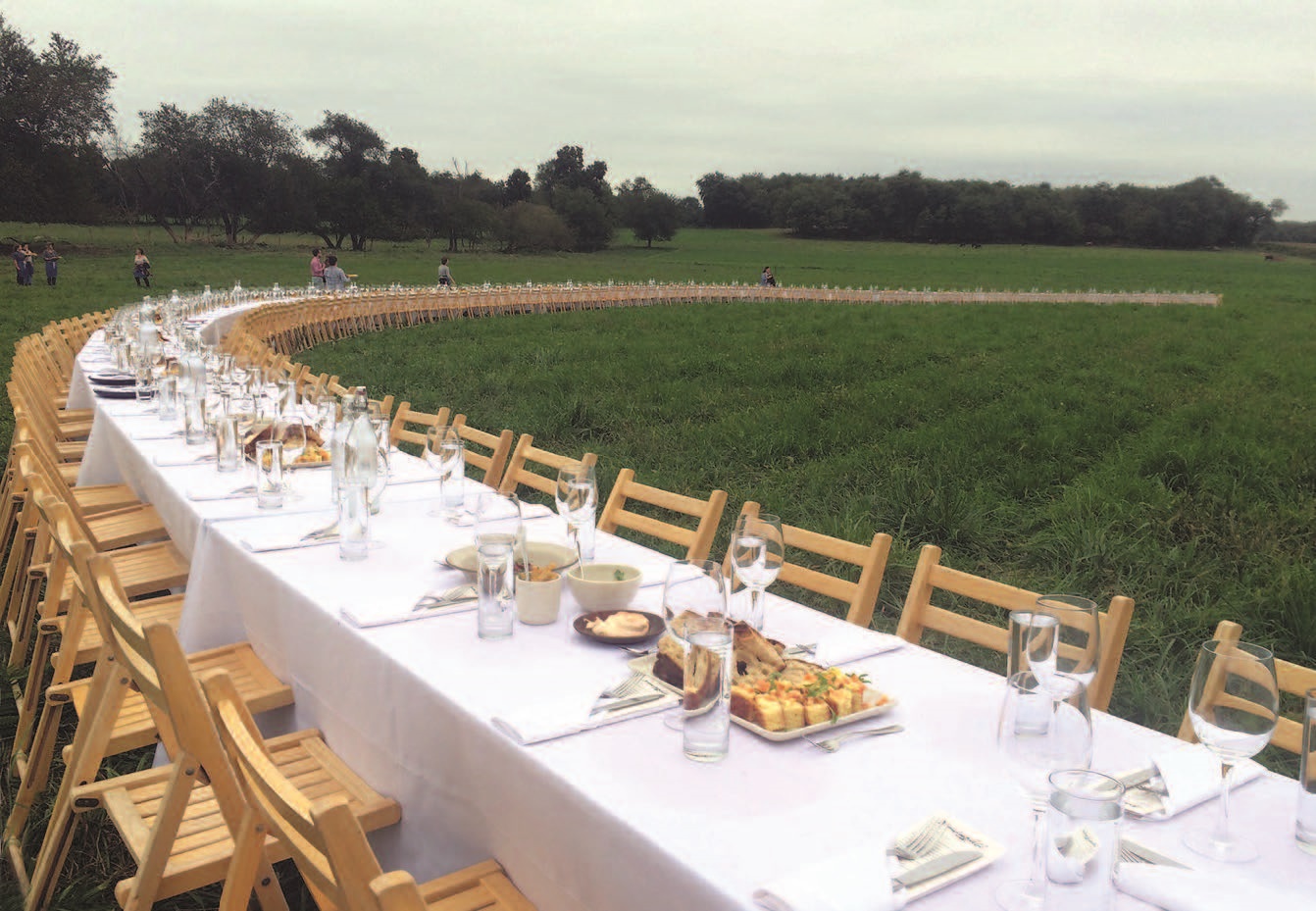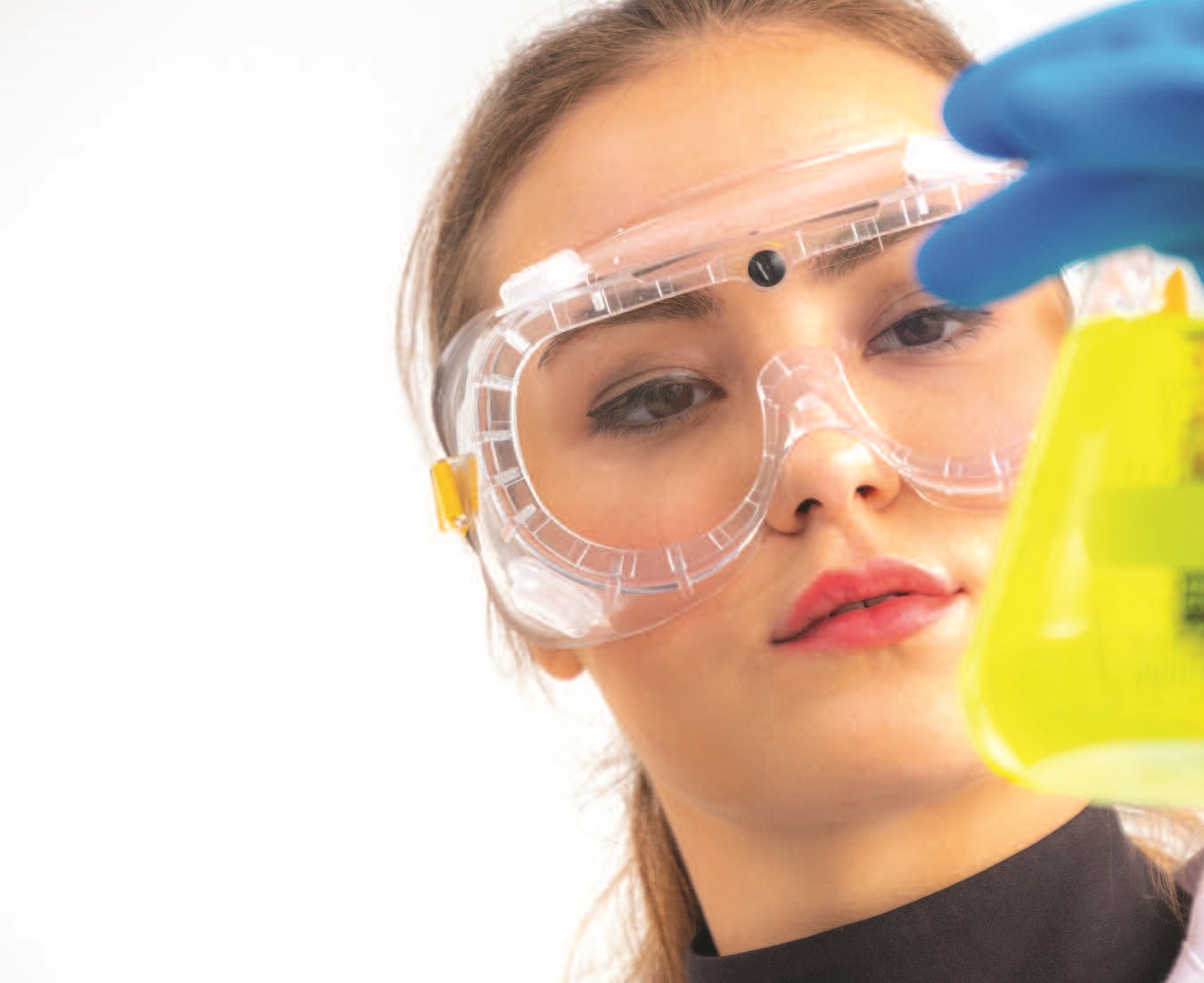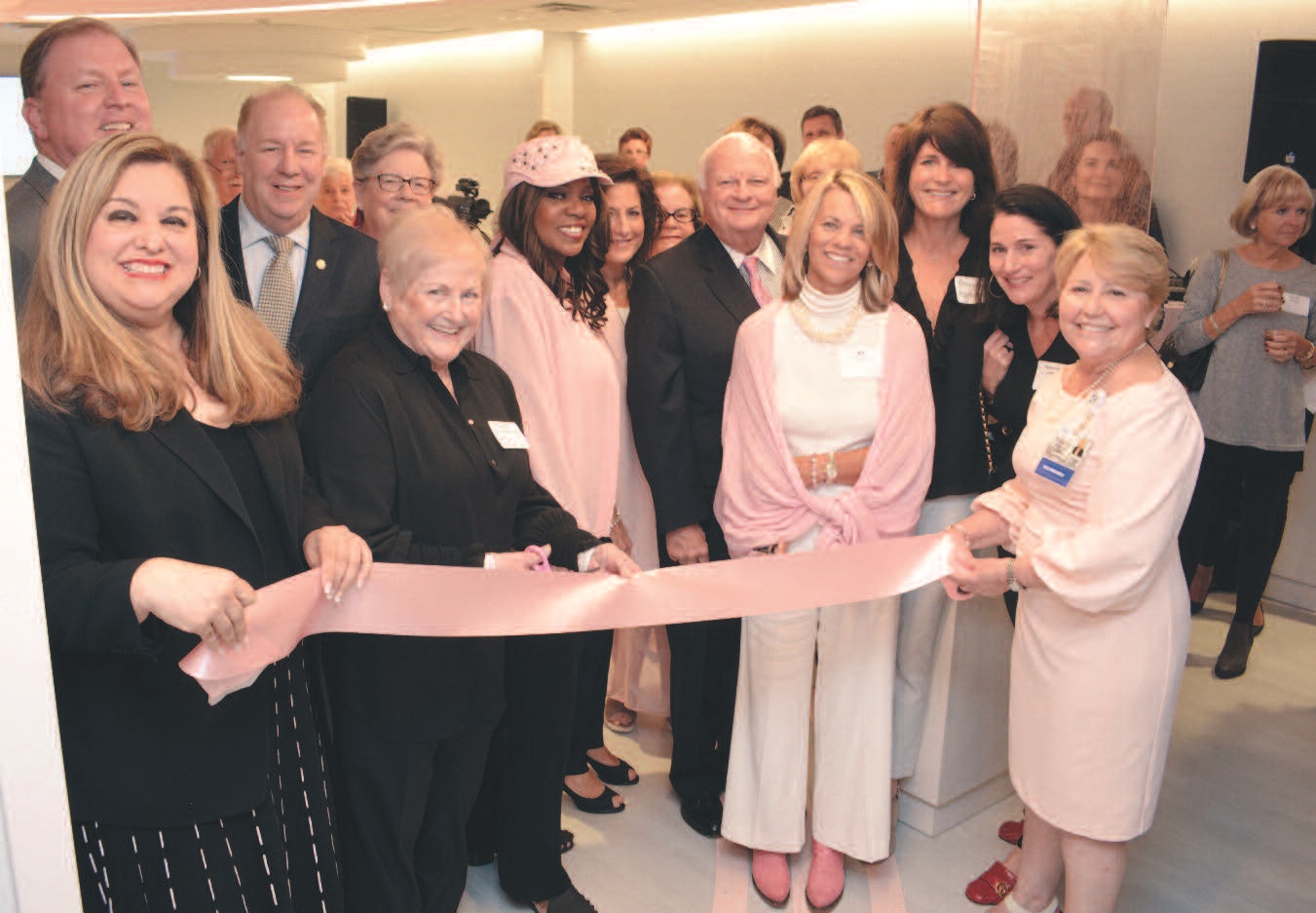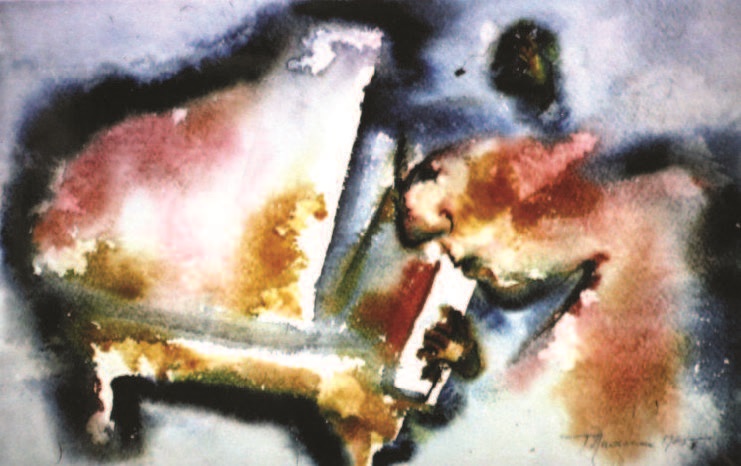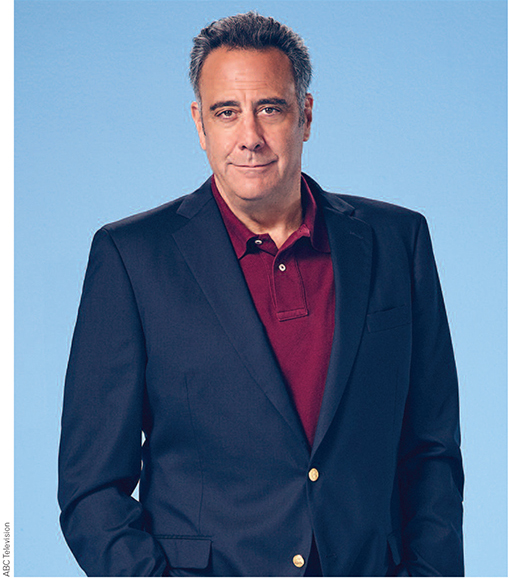Outstanding in the Field Returns to Riverine.
By Andy Clurfeld
Chef David Viana looked quite at home where the buffalo were roaming, on the plains of Warren County where Riverine Ranch sprawls across 62 verdant acres in a hamlet known as Asbury. Viana and his crew from Heirloom Kitchen in Old Bridge were working under a tented outdoor kitchen and on grills set up astride the bustling space as ranch owners Courtney and Brian Foley gave tours of Riverine, introducing some of the 150-odd buffalo and their products—meats, cheeses, yogurt, butter—to 250 guests who had journeyed from all parts of New Jersey, plus New York and Pennsylvania, to take part in the ultimate in farm-to-table dining: the national Outstanding in the Field (OITF) program.
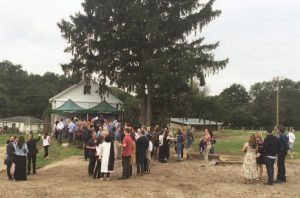 Viana, himself a nationally recognized chef who this year was nominated for a coveted James Beard Award as Best Chef in the Mid-Atlantic region—and the Foleys, a teacher and an electrician originally from Queens (who in 2004 moved to Washington Township in Warren to farm)—were anointed by the Outstanding in the Field hierarchy as worthy of hosting a dinner. This is a big deal.
Viana, himself a nationally recognized chef who this year was nominated for a coveted James Beard Award as Best Chef in the Mid-Atlantic region—and the Foleys, a teacher and an electrician originally from Queens (who in 2004 moved to Washington Township in Warren to farm)—were anointed by the Outstanding in the Field hierarchy as worthy of hosting a dinner. This is a big deal.
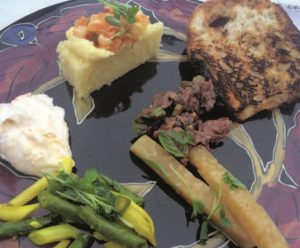 OITF, founded by Jim Denevan in 1999 as a “traveling celebration of people and place and the origins of good food,” had stopped in New Jersey once before, last year, at Riverine. Folks had such a good time at the buffalo farm, OITF decided to come back. The Foleys reached out to Viana, who brought his Heirloom crew (Sean Yan, Kendall Szpakowski, Katherine “Kat” Norat, Rob Santello and owner Neilly Robinson) to the farm to do what they do best: Make the most out of from-the-farm ingredients. The 250 diners were waiting—and had been since seats to the long table set in the signature OITF arc had gone on sale the first day of spring last March, and sold out shortly after. It’s a competitive sport, acquiring OITF dinner reservations; there are those who follow the flow of the transcontinental dinner party as it serves forth starting in the early part of the spring in the warmer climates and continues through fall, touching down in colder parts of the country. Demand is such that, after a break for the OITF home team during the holidays, there’s now a winter session of dinners in the warmest parts of the country.
OITF, founded by Jim Denevan in 1999 as a “traveling celebration of people and place and the origins of good food,” had stopped in New Jersey once before, last year, at Riverine. Folks had such a good time at the buffalo farm, OITF decided to come back. The Foleys reached out to Viana, who brought his Heirloom crew (Sean Yan, Kendall Szpakowski, Katherine “Kat” Norat, Rob Santello and owner Neilly Robinson) to the farm to do what they do best: Make the most out of from-the-farm ingredients. The 250 diners were waiting—and had been since seats to the long table set in the signature OITF arc had gone on sale the first day of spring last March, and sold out shortly after. It’s a competitive sport, acquiring OITF dinner reservations; there are those who follow the flow of the transcontinental dinner party as it serves forth starting in the early part of the spring in the warmer climates and continues through fall, touching down in colder parts of the country. Demand is such that, after a break for the OITF home team during the holidays, there’s now a winter session of dinners in the warmest parts of the country.
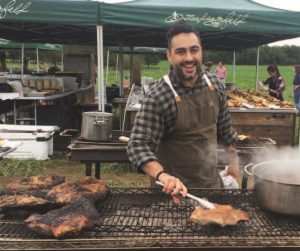 After cocktails and passed hors d’oeuvres, after sampling Riverine’s extraordinary buffalo milk cheeses and visiting the cave where some cheeses are aged, the congregation segued to the arc’d table and took a peek at the chefs. There was Viana (above), turning hunks of buffalo over on a charcoal grill, while his team prepped platters of Riverine buffalo tartare served with crusty toasts of bread from his pals at Talula’s in the “other Asbury” (Asbury Park, that is, down the Shore). They’d amped up the opening round served at table with pickled vegetables from Hauser Hill, a farm based in Old Bridge, and cornbread and corn butter from Thompson Family Farm in Wall. A salad of tomatoes from Hauser and buffalo mozzarella from Riverine came with microgreens, while gnocchi made with smoked Riverine buffalo ricotta took a liking to condiments constructed with Hauser carrots, onion and apple. It’s all served family style, with guests and their new best friends quickly settling in at the table. On this night, buffalo roast was carved and plated with chimichurri, polenta and corn, and a suitable finale of roasted pepita pavlova came with Forbidden Rice meringue laced with Riverine buffalo milk. “It’s a pretty big undertaking,” Viana says, noting that it takes a good week to prep and cook outdoors for the huge crowd. “It’s not easy to cook for 250 on a charcoal grill! But we’d do it again in a heartbeat. It’s all about people coming together at the table…there’s an energy that’s palpable.”
After cocktails and passed hors d’oeuvres, after sampling Riverine’s extraordinary buffalo milk cheeses and visiting the cave where some cheeses are aged, the congregation segued to the arc’d table and took a peek at the chefs. There was Viana (above), turning hunks of buffalo over on a charcoal grill, while his team prepped platters of Riverine buffalo tartare served with crusty toasts of bread from his pals at Talula’s in the “other Asbury” (Asbury Park, that is, down the Shore). They’d amped up the opening round served at table with pickled vegetables from Hauser Hill, a farm based in Old Bridge, and cornbread and corn butter from Thompson Family Farm in Wall. A salad of tomatoes from Hauser and buffalo mozzarella from Riverine came with microgreens, while gnocchi made with smoked Riverine buffalo ricotta took a liking to condiments constructed with Hauser carrots, onion and apple. It’s all served family style, with guests and their new best friends quickly settling in at the table. On this night, buffalo roast was carved and plated with chimichurri, polenta and corn, and a suitable finale of roasted pepita pavlova came with Forbidden Rice meringue laced with Riverine buffalo milk. “It’s a pretty big undertaking,” Viana says, noting that it takes a good week to prep and cook outdoors for the huge crowd. “It’s not easy to cook for 250 on a charcoal grill! But we’d do it again in a heartbeat. It’s all about people coming together at the table…there’s an energy that’s palpable.”
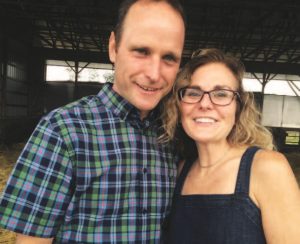
Courtney and Brian Foley (left)
For Courtney and Brian Foley (left), it was a “fantastic opportunity to work with the people from Heirloom Kitchen.” And, adds Brian, a chance as well to share our “passion for water buffalo.”
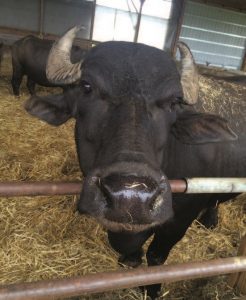 In the lead-up, the Foleys hosted Viana and his crew at Riverine, giving them tastes of the various buffalo meat and dairy products and sending them home with samples. The chefs then worked up a menu for the OITF dinner in conjunction with farms and artisans Viana often works with at his restaurant. After that, “we just straightened up the farm a bit,” Courtney says with a laugh. “Our buffalo are very friendly and very photogenic.” Top that off with delicious from-the-farm fare and you’ve got a dinner for the ages.
In the lead-up, the Foleys hosted Viana and his crew at Riverine, giving them tastes of the various buffalo meat and dairy products and sending them home with samples. The chefs then worked up a menu for the OITF dinner in conjunction with farms and artisans Viana often works with at his restaurant. After that, “we just straightened up the farm a bit,” Courtney says with a laugh. “Our buffalo are very friendly and very photogenic.” Top that off with delicious from-the-farm fare and you’ve got a dinner for the ages.
Simply Outstanding
- Riverine Ranch is located at 247 Cemetery Hill Road in the Asbury section of Washington Township. The Foleys sell their products out of a store on the farm, which is open Saturdays and Sundays from noon to 4 p.m. For information, call (908) 319-3356 or visit riverineranch.com.
- Heirloom Kitchen is located at 3856 Route 516 in Old Bridge. For information and reservations to its dinners and cooking classes, call (732) 727-9444 or visit heirloomkitchen.com.
- Outstanding in the Field’s dinners can be tracked on its Web site, which also offers links for reservations: outstandinginthefield.com.
15 Home Gift ideas people will actually use…and probably love.

Been to any yard sales lately? They are basically graveyards for failed gift ideas. While online shopping has sent brick-and-mortar retail hurtling toward extinction, the American consumer’s insatiable need to accumulate pointless junk has only grown. It’s one thing to impulse buy or drunk shop for yourself, but when it comes to purchasing gifts for friends, family, and co-workers, shouldn’t we be exercising a bit more thought and consideration? Before you toss that holiday gift into your (real-life or virtual) shopping cart, think about whether the intended recipient actually has a need for it. Or the space for it. Or the aptitude to use it. Or the desire to clean it. Chances are if you check all these boxes, that person is going to love it. The perfect holiday gift does not have to be expensive or even fun. If it addresses a need or solves a problem or just makes life easier or more interesting, then you’ve hit a home run.
The EDGE staff has combed store shelves and web sites to identify 15 items that a homeowner or apartment dweller will find useful and appealing. They range in price from a little to a lot. If you’re stuck for a great idea and the clock is ticking, we think you’ll find something in the following pages that will be right on the money…
CARROT SHARPENER

Carrot Sharpener
The Monkey Business Karoto Vegetable Peeler ($10) looks like it came out of your old grade-school pencil box, but the shavings it produces are healthy and edible. It creates ribbons and slices for salads and garnishes, and comes with a second blade that produces vegetable “pasta.” It works best on root vegetables, but can also be used on potatoes and fruit. And it’s safe for kids, making it a fun way to get them involved in meal preparation.

Homey Product Taco Holders
HOLDING PATTERN
Taco Night always sounds better than it is, in large part because making and serving the crunchy shells ends up being a hard lesson in gravity. Homey Product Taco Holders ($12) solve both issues by combining smooth, smart design and functionality. Tacos stay put in the colorful, BPA-free stands, which are microwave safe and work equally well for hard or soft shells. The holders come in sets of 12.

Hot Hand
HOT HAND
Few things are more annoying than struggling with that hard-as-rock Häagen-Dazs or Ben & Jerry’s pint when you have to have a bowl or cone of ice cream now. It’s a wrist injury waiting to happen or, worse, a sudden slip of the scoop could send a chunk of Chunky Monkey flying across the kitchen. The Heat Conducting Scoop ($20) from UncommonGoods uses the magic of thermodynamics to transfer heat from the hand, through a conducting liquid in the handle, to the scoop’s ring. No dipping in hot water, no waiting for the thaw.

Dreamfarm Clongs
LIFT OFF
Sure, everyone has a spoon holder for the stove or countertop, but what the heck are you supposed to do with gooey, greasy, sauce-covered tongs? Dreamfarm Clongs ($25) are an elegant answer. The stainless steel click-lock tongs feature a subtle bend in the handles that enables them to lay flat without the silicone tips touching surfaces and making a mess—or to rest on the edge of a pan. The clongs are dishwasher-safe and resistant to high heat, so they can double as a barbecue accessory.

WEIGHT OF THE WORLD
We’re betting the foodie on your gift list doesn’t have the Perfect Portions Digital Nutrition Food Scale ($40). It weighs and measures 2,000 items and ingredients while displaying their nutritional information on a built-in screen. It’s cool for the curious and essential for calorie counters and folks on a restricted diet. Bakers will wonder how they ever lived without it. You can also use it for weighing other items, too (is that a one-stamp envelope or a two stamper?).

Keyport Slide 3.0CHAIN REACTION
Keychains and fobs can do a lot of interesting things nowadays, but no keychain is more interesting than the Keyport Slide 3.0 ($40), the “Swiss Army Knife of Keychains.” Smaller than a box of Tic-Tacs, the 3.0 houses six different tools of the owner’s choice. Options include a pen, bottle opener, mini-light, and 32GB USB flash drive. It also accommodates standard, high-security, and transponder-chipped keys for unforeseen emergencies and a “reward-if-found” program from the company.

Burnt Impressions Selfie Toaster
BURNT OFFERING
How many people brag about their toasters? Why would anyone brag about their toaster? The Burnt Impressions Selfie Toaster ($50) certainly answers the second question. It turns toast into a work of art thanks to a pair of customizable stainless steel stencils that can burn almost any two-tone image (including the owner’s own headshot) into a slice of white bread. The lucky recipient (or thoughtful giver) of the Selfie Toaster uploads an image, which the company turns into the aforementioned stencils. The outside of the toaster can be customized, too. The toaster is manufactured in China but the stencils are fabricated in Vermont.

TileLOST AND FOUND
Admit it…most of the people you know are constantly misplacing their keys, wallet, handbag, phone, et cetera. The Tile Mate Item Tracker ($50 for a 2-pack) enables the “loser” in your life to locate nearby items by sound and anything else (within a 200-foot radius) on a map display. There is even a wider community of users that can help locate items that are lost out in the big, bad world.
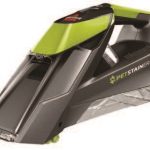
Bissell Pet Stain Eraser
LIKE IT NEVER HAPPENED
Cleaning up after sloppy, unhealthy or inconsiderate pets is one of life’s great miseries, even for those who adore their animals. If you haven’t had the pleasure, well, it’s a process. Thanks to the Bissell Pet Stain Eraser ($70), that process is quicker and simpler than ever. The cordless handheld device sprays, scrubs and suctions away all manner of deposits left on rugs, floors and upholstery—at home or in the car. The special cleaning formula is stored inside the machine, and the dirty water compartment empties easily. Pssst. You didn’t hear it here, but this doubles as a clean-up machine for messy kids.
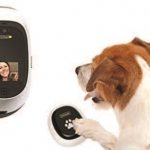
PetChatz PawCall
HANG ON, MY DOG IS CALLING
Not every pet owner can stay on a tight, consistent schedule. Not every pet owner can go more than a few hours without worrying about their cat or dog. The PetChatz PawCall ($90) solves these problems and does a whole lot more. The video system allows a pet to contact its owner (seriously) by stepping on a call button and also play light- and touch-puzzle games (seriously) that dispense a treat. Owner and animal stay in touch via smartphone or tablet apps, and the device dispenses calming aromatherapy oils during thunderstorms or other loud outside noises.

ThinkGeek Thor Hammer Tool Set

ThinkGeek Thor Hammer Tool SetHAMMER TIME
This is a keep-it-in-the-closet gift for the closet Marvel Universe fanatic in your life. The ThinkGeek Thor Hammer Tool Set ($100) is an officially licensed replica of the God of Thunder’s Mjolnir (his hammer), which opens to reveal a 44-piece high-quality toolset. Clever, right? Includes a screwdriver, wrench, ratchet set, utility knife, level, tape measure and some other stuff that’s handy for everyday household repairs. No truth to the rumor that Loki stole the power drill.
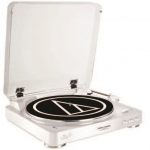 GROOVY
GROOVY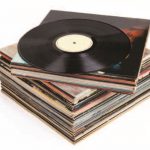
From the Everything Old Is New Again Department, the world has rediscovered classic vinyl LPs and 45s. As they emerge from basements by the milk-crate-full, it turns out that our old turntables haven’t held up all that well. Enter the Audio-Technica Wireless Stereo Turntable ($150), which brings out all those wonderful cracks and pops and connects wirelessly with any Bluetooth speakers or home entertainment system. It can also connect old-school style, with the included output cables. A diecast aluminum turntable minimizes vibration, while a dual magnet phono cartridge and diamond stylus coaxes the best out of the old records.
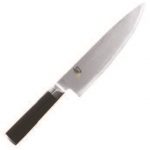 LOOKING SHARP
LOOKING SHARP
According to superstition, giving a knife to a friend will sever that friendship. Not to worry with the 8” classic Shun Chef’s Knife ($150), which you can give to a family member instead! But honestly, who would dump you after such an extravagant gift? The top-of-the-line slicing, chopping and dicing utensil is clad with 32 layers of high-carbon Damascus stainless steel and features a comfortable, D-shaped Pakka wood handle. If you’re the superstitious type remember to just tape a penny to the knife and your friendship will be unbreakable.

Cinemood Portable Movie Theater
MOVIE NIGHT
Few holiday gifts can legitimately be shared by adults and kids. The Cinemood Portable Movie Theater ($350) is most definitely one of them. “Portable” here is something of an understatement, as the wireless 7-ounce, 3-inch cube can literally fit in the palm of your hand. It comes preloaded with Disney content and can project Netflix, Amazon Prime, YouTube and other streaming content on any surface, big or small (up to 12 feet). Needless to say, it can go places you probably wouldn’t or couldn’t take a pricey laptop.

June Intelligent Oven
CHEF OF THE FUTURE
So much junk is advertised in cooking infomercials these days that most people have become conditioned to ignore any “new” and “revolutionary” countertop appliance. Well, the June Intelligent Oven ($600) is the exception that proves the rule. It won’t do all the cooking for you, but it comes tantalizingly close (and it should at this price). Sophisticated software enables the next generation toaster-oven to recognize the food being inserted and prepares it to near perfection, especially after the user tweaks it to taste. It’s big enough for a casserole or whole chicken, but also does toast (but not selfie toast). The oven can be controlled with a smartphone app, as well as through an Alexa smart speaker.
EDGE EDITOR’S NOTE: Except where indicated, the items on this list are widely available online and in stores. If you don’t see anything that connects with your holiday gift list, we suggest a visit to the Crazy Russian Hacker YouTube channel, where many items you see on TV are tested. You may not find anything there, either, but it’s kind of hypnotic.
Not all show business beauties are what they seem. Take Annie Wersching. For more than a decade, TV audiences have been drawn to her appealing, girl next- door good looks only to discover that the people she plays tend to have a mean streak that, well, you wouldn’t want living next door. That may also explain why Wersching a) is one of the most in demand actresses on television, and b) is having so much fun. As Renee Walker on 24, Emma Whitmore on Timeless and now Leslie Dean on Marvel’s Runaways, Wersching has demonstrated a particular talent for taking her characters to the next level in the most entertaining and unexpected ways. Mark Stewart talked to her about the finer points of being a Hollywood star and a Hollywood mom—yet another challenging role she can claim to have mastered.
EDGE: So, congratulations on becoming part of the Marvel Universe.
AW: It’s been crazy [laughs]. It’s not just how they deal with their shows and their actors—it’s certainly more secretive, and there are more rules—but it’s fun to see how they’ve taken the Runaways comic and changed it for television. And how they are pleasing the hardcore fans, yet keeping things unpredictable. I’ve never played someone like my character, Leslie Dean. She’s quite a trip.
EDGE: She seems a bit unhinged.
AW: Yes, but in a very put-together way. She’s the head of this big celebrity church in Los Angeles, and she harbors a lot of secrets. There’s a lot of crazy, cringe-worthy stuff she has to do. Stuff that, to look at her, you wouldn’t expect from the way she presents herself. It’s a big ensemble cast, so in some episodes I have a lot to do and in others not so much. There’s actually been a learning curve for me getting used to that.
EDGE: On your previous series, Timeless, you played a time-traveling assassin. That was a very complex character. A lot of fans were anxious for Timeless to be renewed for a third season because Emma was about to become the leader of Rittenhouse, the bad guys in the show. At least there is a wrap-up TV movie on the way.
AW: Emma was following what she believed the overall Rittenhouse plan was but, yes, she was going to run the show now. It would have been really fun, because she was a little “spontaneous” shall we say.
EDGE: I’ve always been curious about an aspect of movies and TV shows that deal with time travel. Since it doesn’t exist, that means the writers have to establish some basic do’s and don’ts and then weave them into the plots. You also tend to bump up against some logic issues. Was this a constant discussion on Timeless?
AW: Oh, my gosh. Yes. In terms of the science of time travel, there were rules on the show. I would have loved to have been a fly on the wall in the writers’ room to see how in the world they figured out the exact rules we were going to follow.
EDGE: For your character in particular.
AW: Right. When we first find Emma, she has been spending ten or eleven years in the past. But in the present storyline, it’s only been about six months or something. So I would ask, Wait, how old am I? Am I aging? If I go back to the present-day storyline, would I look ten years older? There were so many things like that I’d ask questions about. I have no idea how they kept it all straight, but they had it down. No-no-no…this should be this, and that should be that, and you can’t go back to a time you’ve been in before…I was pretty good at science in school, but when it comes to the TV version of time-travel science, I was like, Yeah, somebody just tell me what makes sense.
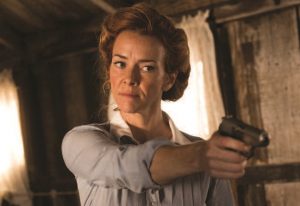
NBC/MiddKid Productions
EDGE: Was Emma’s story arc laid out for you, or did it unfold script by script?
AW: It was one hundred percent script-by-script.
EDGE: So, as an actor, how do you dig in and understand her purpose and motivation?
AW: It was very tricky. Especially in her first episode. It wasn’t even revealed to me at that point that she was a mole or a bad guy or with Rittenhouse or any of that. Looking back, I think fans saw little smirks and things that they read into her, but at the time, I had no idea how the plot would twist at the end of the season. I knew there were secrets that she had, for sure, but I didn’t know exactly how big they were. A lot of actors write journals and go really in-depth into backstories so they can flesh out a character in their mind. But that’s hard for me in television, because if I make up this whole story and the script comes for the next episode and it contradicts what I made up in my head, that just complicates things for me. So unless I have a really big, serious question—something that doesn’t make sense to me in the episode—I tend to go with what I have on the page from the writers and try to give the characters some humanity and vulnerability and go from there.
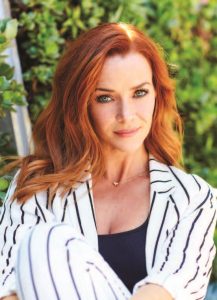
Photo by Jonathan Weiner
EDGE: You had worked with Goran Visnjic before Timeless.
AW: Yes. He played Garcia Flynn in the series. We had done the Halle Berry series Extant together. Goran and I already had a nice rapport, which was good because Emma and Flynn had a fun little chemistry. I hadn’t worked with any of the other cast members, but I had seen Abby [Abigail Spencer] in Rectify. It was fascinating to watch her work. Everybody works differently. Some people have everything planned out when they come in. She would come in and have a lot of questions. But when they said Action, she was just so one hundred percent present and could tap into different emotions so amazingly. It was just so cool to watch her work. I would forget my lines just watching her in awe.
EDGE: On 24, you played Renee Walker, more of a good guy role, at least on the surface. Do you have more fun playing good guys or bad guys?
AW: I absolutely adored playing Renee. Any character that has a switch or change is fun to play. Renee was a good guy, essentially, and Emma was essentially a bad guy. But Renee started as a rules-follower then slowly but surely went over to the dark side after spending some time with Jack Bauer. Emma was very committed to the rules she was going to follow. She spent all those years back in the past to prove herself to Rittenhouse. So both were very committed.
EDGE: How much Annie Wersching was there in Renee Walker?
AW: There is a little bit of me in every character I play. As far as her being a bad-ass, I really enjoyed playing that portion of Renee. I also loved fleshing out her physical aspect. I was a dancer growing up.
EDGE: Did her use of torture bother you or make you squeamish?
AW: Oh, no. I was like, Yes! Not that I agree with torture, but I like anything that makes the audience go Holy crap! That’s always fun to play. And again, it was something that deviated from what she had always been like. It was super fun.
EDGE: Is it an advantage or a disadvantage of joining an established series like 24, which was already six seasons in?
AW: A bit of both. It’s nice to go into a show that’s already a well-oiled machine. I came on in Season Seven, and there had been some negative stuff said about Season Six, so there was a lot to prove. In terms of someone who had to go toe-to-toe with Jack, who had a lot of fans in the audience, that’s always a risky thing. But as soon as I saw how they were writing Renee and the fan response to her, I couldn’t have been more excited. Especially when she started to kind of become the female Jack Bauer. That was huge in terms of winning people over.
EDGE: Did they let you know from the start that you would become a love interest for Kiefer Sutherland’s character?
AW: I didn’t really know that. They wanted Renee and Jack to go toe-to-toe, professionally. Of course, they wanted there to be sparks. Actually, the second I learned about them finally getting together, my first thought was Oh. No. That’s the end of her.
EDGE: Any feelings about Russian meddling?
AW: Oh, I know! I spent all that time undercover with the Russians in that second season! When I’d see that stuff in the script, I’d say, No, that’s too much. This isn’t believable. No way. Let’s stick to real life. Cut to ten years later, and it’s…real life. Terrifying!

Amazon Video
EDGE: In the Amazon series Bosch, you played against Titus Welliver. His character, Harry, was also very dark— like Flynn and Bauer. Does that rub off on you after a while?
AW: Definitely. But in Bosch, my character was such a newbie, always messing up. The two of them together— the hardened professional veteran with this rookie—I thought it was a cool dichotomy. I love Titus. We got along fine. We had a really good time.
EDGE: Which male lead has brought out the best in you?
AW: I’ve been really lucky in that department. I played against Kiefer so long I learned a tremendous amount from him. Titus is definitely up there. And I really loved working with Goran in two different shows as two different sets of characters. I feel I’m good at observing and absorbing the good things from these dynamics. I’m a bit of a sponge.
EDGE: You mentioned dancing. Was that how you got your start as a performer?
AW: It was. In fourth grade, I started doing plays and musicals in school and continued into junior high school and high school and then into college. I don’t recall a moment where I thought, This is what I have to do! It was just kind of what I did. But yes, I started with dance. Tap, jazz, ballet, and Irish dancing—which I think was where I had my first experience in terms of stage presence. In the Irish dancing community at that time, everybody was very, very serious. No one ever smiled. It was very rigid. Nowadays, it’s happier, and there is more of an entertaining factor to it. But back then, I was literally known as “The girl that smiles.” If you go back and look at stories from my competitions, they would always mention that. From a competitive standpoint, I have a lot from that experience, in terms of finding a way to stand out. That really helped when I transitioned into plays and musicals.
EDGE: What were your plans after college?
AW: I was a musical theater major, and I’d always planned to go to New York. I went to Chicago briefly after school and ended up touring with a musical that closed in Los Angeles. So I thought, Let me check this L.A. thing out. One of the first things I witnessed was, as a member of a live audience, a taping of Stark Raving Mad, the sitcom with Neil Patrick Harris and Tony Shalhoub. I thought, This is the best of both worlds—they are performing like it’s theater with the audience interaction, but you are on TV—this is the dream. I never went to New York. I returned to Chicago, packed up my stuff, and moved to L.A.
EDGE: What were you doing to develop your skills in your 20s?
AW: Gosh, I was doing it all. Early on, I did a couple of musicals at the Pasadena Playhouse. I was doing commercials. I did extra work. I didn’t take many classes—probably because I didn’t have any money. I booked a pretty good guest star on Star Trek Enterprise. That was fascinating. I remember learning a lot from that group. Then I slowly started booking co-stars with a couple of lines, and then guest stars, then the “recurs”— it’s like this ladder you have to climb. Once I became more of a woman as opposed to a girl, I think it matched up more with how I carry myself, and also my voice. Things changed when I started auditioning for the woman in the show and not the chipper girl in the show. It meshed better with my personality…although I am pretty chipper.
EDGE: After all these years working in television, are you ever tempted to get back on the stage in a play or a musical?
AW: Oh, yeah! I’ve been thinking about it for years, but it’s hard to time it with the television world. It would have to be in the hiatus from whatever show I’m on. But I’d absolutely love that.
EDGE: Did you model yourself after a particular actress when you were younger?
AW: No, not really. Growing up, the posters on my wall were Marilyn Monroe and [laughs] Brad Pitt. Not that I wanted to be like Marilyn, but I was obsessed with her transformation from Norma Jean. Also, I always loved Michelle Pfeiffer and Julianne Moore and Diane Lane. Women who were women, who had a lot of gravitas in their roles.
EDGE: On your résumé is a stint on the daytime drama General Hospital. I am friendly with actors who tell wild stories about knocking those shows out day after day.
AW: I was on General Hospital for about five months, and it was totally insane. I had never done anything like it. It was incredibly exciting. Also, it was the first time my mom and the people back home could see me on TV every day of the week. It was definitely a big deal for me. I left t h e show for a couple of weeks to shoot the pilot for 24, which was my first big pilot booking. Darby Stanchfield played my role for those two weeks, and then I came back. At that point, they were interested in signing me to a four-year contract. I was wavering on whether or not to sign for a long time. It’s a commitment. I think we shot fifty pages a day. On 24 or Runaways or Timeless, we might shoot six to eight pages of dialogue a day. It was intense. I mean, unless you’re falling down bleeding, they’ re moving on—just get the words out and go to the next scene. It was great training, and it forces you to make a choice because you don’t have another take to try something different. You have to really know what your character wants s and what you want to accomplish in that scene. It helped me become more concise and also I learned pretty quickly that I was good at the memorization part of it. It was a lot of work…I don’t think the regulars who are on the show get anywhere near the credit they deserve.
EDGE: You are expecting your third child at the same time you are shooting Season Two of Runaways. Is this the first time you’ve been in this situation? Are you at the point where they need to start hiding you behind things?
AW: I think we’re just about to hit that part…and yes, it’s a first for me. I wouldn’t say that it’s been fun. At the very beginning, I was actually terrified to tell them—Oh, God I’m going to ruin the show, Leslie is going to be chubby this season—there are so many aspects of that, just from a vanity standpoint. There are so many things that go through your head. My character wears all white and, in the beginning, I was having morning sickness like crazy, so I was dealing with that. But it’s fine.

HULU/ABC Signature Studios
EDGE: You and your husband [actor Stephen Full] are raising a family while working full-time in the business. How do you pull that off?
AW: It’s not super easy, but it’s certainly nice that we both“ get it. ” We both understand what it’s like to be in the midst of a crazy shoot. We’ve been incredibly lucky that our careers have balanced each other in amazing ways. The couple of times we were both series regulars we didn’t have kids yet, so we were living the dream. Now, like, tomorrow, both of us are filming and for the life of me, I cannot find a babysitter. So I’m like, Okay I guess my son will just have to come to the trailer with me. I feel like we’re always scrambling to figure it out. But I think we’re doing a good job keeping things normal for them. We’re Both pretty grounded.
EDGE: What presents the biggest challenge?
AW: We’ve been lucky in not having to work out of town too long. That’s where it becomes really hard when you’re on location. The Vampire Diaries shot in Atlanta and I was gone quite a bit for that. I had the little one with me, but I missed my older boy’s first day of kindergarten. You know, stuff that’s never going to happen again. It’s inevitable that you’re going to miss some of those moments. That’s rough. Timeless shot in Vancouver, but at least that was in the same timezone as California, so you can talk to your kid before bedtime. Sometimes it’s these little things that make a big difference.
Editor’s Note: Annie Wershing’s third child was due as this issue went to press. Although NBC canceled Timeless after Season Two, the network shot a two-hour “wrap-up” TV movie, which it plans to air in December.
Nine mind-blowing 2018 medical breakthroughs.
By Mark Stewart
Was 2018 a banner year for medical breakthroughs? Only time will tell, of course. That being said, there were a number of wow-factor stories that found their way into the mainstream media, as well as some that flew a bit under the radar. Each of the following news items, in its own way, heralds a game-changing health discovery that is likely to have a near-term impact—perhaps on your life or the life of a friend or family member.
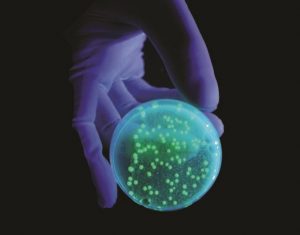 LET THERE BE LIGHT
LET THERE BE LIGHT
During flu season, every countertop, door handle, and armrest is a potential vector for illnesses that sicken millions—and can be deadly to those with compromised immune systems. A study published in Scientific Reports earlier this year showed that far-ultraviolet C light—aka. Far-UVC—can kill flu viruses. The beauty of Far-UVC.(besides its cost-effectiveness as a virus-killer) is that it is not harmful to human cells. Conventional ultraviolet light kills viruses but causes skin damage with too much exposure. This breakthrough could have a dramatic impact on the spread of microbial diseases—not just on public surfaces, but in the air, including influenza and even tuberculosis. Don’t be surprised to see Far-UVC fixtures in airports, schools, and hospitals in the years to come.
 A SLUG’S LIFE
A SLUG’S LIFE
For all the medical advances made over the course of human history, wound and incision closure hasn’t progressed all that much. Stitches and, later, staples have been the basic method for keeping our insides in and the outside out. Last year, inspired by the sticky defensive slime secreted by the European slug (Arion subfuscous), scientists at Harvard’s Wyss Institute for Biologically Inspired Engineering created a new adhesive material that sticks to wet surfaces. In 2018, scientists took things a step further and unveiled a new surgical “superglue” that shows great promise as an alternative to stitches and staples. The advanced hydrogel is made of biomaterials that mimic the slug mucus, which adheres to surfaces in three different ways. The ick factor notwithstanding, it is non-toxic, flexible and able to stick to any surface—even surfaces covered in blood. Next up? A biodegradable version that will dissolve when a wound fully heals.
QUICK AND PAINLESS
We are officially one step closer to Star Trek sickbay thanks to Portal Instruments, a company working with MIT to develop a needle-less shot. The result of their work is PRIME, an injection device that introduces a high-pressure stream of medicine through the skin and into the blood without the sharp stick that none of us particularly likes. PRIME ejects doses of medication at Mach 0.7, or about the cruising speed of a Boeing 707. For people with an intense fear or phobia of needles—who often avoid much-needed doctor visits—the needle-free injection is a game-changer.
 EARLY ONSET DEMENTIA BREAKTHROUGH
EARLY ONSET DEMENTIA BREAKTHROUGH
A few years ago, the acronym CRISPR began popping up in medical stories. It stands for Clustered Regularly Interspaced Short Palindromic Repeats and refers to a type of DNA sequence in bacteria and single-celled microorganisms. In 2018, scientists at the Salk Institute used CRISPR gene editing to target the RNA of diseased cells related to frontotemporal dementia, which is second to Alzheimer’s in early-onset dementia cases. In the Salk experiment, the RNA targeting effectively restored healthy levels of protein to the neurons affected by the disease. RNA-targeted use of CRISPR has been tried before, but in terms of accuracy, this type of gene-editing represents a significant breakthrough.
NEW WEAPON AGAINST SUPER BUGS
The battle against drug-resistant bacteria took an interesting turn this year when researchers at the University of Lincoln in England synthesized an antibiotic called teixobactin—and used it successfully to treat infections in mice. Teixobactin is a key weapon in fighting bacterial strains such as MRSA, which are difficult to kill and possess the potential to trigger epidemics. Teixobactin was originally discovered using a new method of culturing bacteria in soil and has been shown to kill Staphylococcus and Mycobacterium tuberculosis. The ability to synthesize teixobactin on a commercial level will take many years but should provide an important level of protection against staph and tuberculosis sometime in the 2020s.
 MOSAIC VACCINE
MOSAIC VACCINE
A large human trial on a new HIV vaccine began in sub- Saharan Africa this year. The new “mosaic” vaccine addresses an obstacle that has thwarted the development of this type of vaccine for decades: The virus has multiple strains and tends to mutate rapidly. Initial trials on healthy, low-risk individuals in the U.S., Asia, and Africa produced a significant anti-HIV immune response. Tests of the vaccine on rhesus monkeys protected two-thirds from HIV. “One of the great challenges for development of HIV vaccine is viral diversity,” says Dan Barouch, Director of the Center for Virology and Vaccine Research at Beth Israel Deaconess Medical Center in Boston. “The mosaic strategy is one way to attempt to deal with the global virus diversity.”
 SLOWING ALZHEIMER’S
SLOWING ALZHEIMER’S
An 18-month trial completed earlier this year by Biogen (a U.S. biotech company) and Eisai (a Japanese pharmaceutical firm) has confirmed that the experimental drug BAN-2401 slows the progress of Alzheimer’s disease. BAN-2401 is an antibody that removes amyloid, the protein that interferes with nerve-cell function in the brain. The study was conducted on 856 individuals with mild cognitive impairment or signs of early-stage Alzheimer’s, all of whom showed amyloid build-up. Other drugs have been effective on amyloid levels, but BAN- 2401 reduced the development of new amyloid clusters and—most notably—slowed the decline in planning and reasoning skills by up to 30 percent. More work needs to be done, but this marks the first time a significant clinical trial has identified a drug that actually slowed Alzheimer’s disease.
 SPECIAL K
SPECIAL K
Ketamine has a long and varied history. It was used as an IV anesthetic during Vietnam and is still used in field. hospitals and ERs. It is prevalent in veterinary medicine
(though not as a “horse tranquilizer” as some have referred to it) and is sometimes used to treat chronic pain in humans. Ketamine has also enjoyed some popularity as a high-powered party drug. In 2018, building off a decade’s worth of clinical studies, researchers at the University of Illinois at Chicago College of Medicine concluded that Ketamine is able to lift treatment-resistant depression in a few hours—which has profound implications within the psychiatric community. Indeed, it’s the first drug in more than two generations that has demonstrated an ability to affect various neurological pathways to alleviate depression. The Chicago study, published in the June edition of Molecular Psychiatry, was one of several on Ketamine released during 2018. Unfortunately, the antidepressant effect rarely lasts longer than a week or so, and it is unclear whether repeat infusions are effective or even safe. The discovery has triggered research into similar drugs that last longer and come with fewer side effects, so expect more news to come in 2019 and beyond.
 EXPLOSIVE DEVELOPMENT
EXPLOSIVE DEVELOPMENT
When you see the letters TNT, you probably think dynamite. When scientists in the field of regenerative medicine talk “TNT,” they are likely referring to Tissue Nanotransfection, an emerging technology that involves a stamp-sized chip that reprograms skin cells to help repair organs and blood vessels. The implanted chip is used to send an electrical current into the body that delivers genetic codes to the skin cells, essentially changing their function to rescue failing body functions. In a series of 2017 lab tests at the Ohio State University College of Medicine, researchers applied the chip to the legs of mice that vascular scans showed had little or no blood flow. The TNT chip reprogrammed their cells to become vascular cells and within a week the transformation began. By the second week, active blood vessels had formed. By the third week, the legs of mice were saved (with no other treatment). Human trials of this technology began this year.
What will today’s toddlers be doing three decades from now?
by Luke Sacher
If you’ve recently been blessed with a child, grandchild or great-grandchild, I’m guessing the furthest thing from your mind is the kind of work they’ll be doing when it comes time to raise a family of their own. Granted, it’s a long way off. And the world will certainly look much different than it does today. However, one thing that is unlikely to change is that what we do will still determine, to a large degree, who we are. Which makes what we do important. What will the employment landscape of 2050 actually look like? That great Bronx philosopher, Yogi Berra, once said It’s tough to make predictions—especially about the future. Don’t expect any here from me. I’m just a 58-year old idiot who writes magazine stories. But I do know what the “experts” are saying and, although their predictions vary dramatically in regard to specifics, in two general areas they seem to agree.
1) About 60 percent of currently existing jobs will remain, particularly those involving technical and mental skills that automation simply cannot replace. The human factor will still be at a premium. By contrast, according to a 2013 Oxford University study, the least safe jobs (those currently performed by humans that are most likely to be fully automated over the next 20 years) are, in percentage of probability: Telemarketer 99%, Loan Officer 98%, Cashier 97%, Paralegal and Legal Assistant 94%, Taxi Driver 89% and Fast Food Cook 81%. The same study identified the “safest” jobs as Mental Health and Substance Abuse Social Worker 0.3%, Occupational Therapist 0.35%, Dietitian and Nutritionist 0.39%, Physician and Surgeon 0.42%, Clergy 0.81%. Wow. Clergy? That means Woody Allen was wrong. In his classic film Sleeper, he makes his confession to a robot priest that is one of the funniest scenes in movie history. Not going to happen, says Oxford University. Futurist.com, a website run by trend expert Glen Hiemstra, lists the Top 10 currently existing occupations for 2050 as Dental Hygienist, Human Resources Specialist, Pharmacist, Biotechnology Sales Rep, Biomedical Engineer, Programmer/Software Developer, Network and Computer Systems Administrator, Nuclear and Solar Power Engineer, and yeah, you guessed it, Attorney. Hold it, that’s only nine. I’ve saved the best for last: Entrepreneur. Don’t you think that’s a bit misleading? Yes, technically, that kid who needs a diaper change could conceivably join the entrepreneurial ranks of Steve Jobs, Bill Gates, Joy Mangano, Sarah Breedlove, Mark Cuban, JK Rowling, Jeff Bezos, Oprah Winfrey, Jack Dorsey, Sarah Blakely, Mark Zuckerberg, Weili Dai, Peter Thiel, Ariana Huffington or Elon Musk. All they’ll have to do is create an entirely new product or service that billions of people need or want, and for which they will line up around the block to hand over hard cash. Nice work if you can get it. Personally, I would also add these three to the list: Politician, Soldier, and Master Artisan. 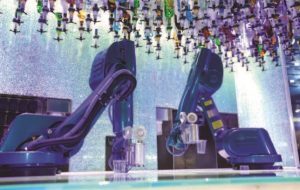 For complicated ethical and psychological reasons, people will continue to prefer being lied to and killed by other people rather than by androids. And there will always be a high demand for unique, hand-crafted beautiful things with charming imperfections, such as Michelin 3-star dinners, Patek Philippe watches, Tiffany engagement rings and Lamborghini sports cars. Oh, and also Bartender. Would you really want to go to 21 in New York or Harry’s in Paris and be served a dry and dirty vodka martini or Pimm’s Cup—just the way you like it—by a mechanical arm or silicone-skinned cyborg? Could you imagine Frank Sinatra singing Make it one for my baby and one more for the road to something that looks and walks and talks like a refugee from an auto assembly plant?
For complicated ethical and psychological reasons, people will continue to prefer being lied to and killed by other people rather than by androids. And there will always be a high demand for unique, hand-crafted beautiful things with charming imperfections, such as Michelin 3-star dinners, Patek Philippe watches, Tiffany engagement rings and Lamborghini sports cars. Oh, and also Bartender. Would you really want to go to 21 in New York or Harry’s in Paris and be served a dry and dirty vodka martini or Pimm’s Cup—just the way you like it—by a mechanical arm or silicone-skinned cyborg? Could you imagine Frank Sinatra singing Make it one for my baby and one more for the road to something that looks and walks and talks like a refugee from an auto assembly plant?
2) Outside of the truly high-end professional careers— including medicine, surgery, law, clinical psychotherapy, and rocket science—most of the professions we think of as being mainstream will come to an end, fully superseded by that of the “gig” (aka freelance) economy. In other words, we will be witnessing the last vestiges of the “cap-and-gown to gold watch + pension” economy in the decades to come. The vast majority of today’s newly born will most likely have to live by the old Marine Corps motto: 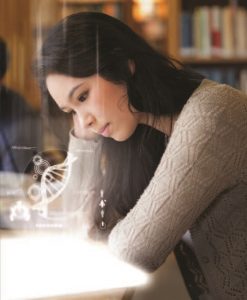 Improvise, Adapt and Overcome. Or if you prefer: When life gives you lemons, make lemonade. The take-away? Be flexible. Never stop learning. Take earned personal pride in adding more and more tools to your toolbox, and in expanding your potential. Knowledge is power, as Francis Bacon said. Now for the most interesting part. What about the jobs of 2050 that don’t yet exist, or are presently in the prototype or metamorphic stages? Good news! While so many old jobs will disappear, lots of new ones will be created. According to the Institute for the Future (IFTF), 85 percent of them haven’t even yet been invented…which means that tomorrow’s workforce will likely be unrecognizable to us old geezers who hang on for another 30 years. So when your child or grandchild or great-grandchild proudly announces that he or she plans to be something you’ve never heard of, it’s okay to say What? What the heck is that? But be proud, too.
Improvise, Adapt and Overcome. Or if you prefer: When life gives you lemons, make lemonade. The take-away? Be flexible. Never stop learning. Take earned personal pride in adding more and more tools to your toolbox, and in expanding your potential. Knowledge is power, as Francis Bacon said. Now for the most interesting part. What about the jobs of 2050 that don’t yet exist, or are presently in the prototype or metamorphic stages? Good news! While so many old jobs will disappear, lots of new ones will be created. According to the Institute for the Future (IFTF), 85 percent of them haven’t even yet been invented…which means that tomorrow’s workforce will likely be unrecognizable to us old geezers who hang on for another 30 years. So when your child or grandchild or great-grandchild proudly announces that he or she plans to be something you’ve never heard of, it’s okay to say What? What the heck is that? But be proud, too.

Virtual Store Manager
More and more consumers are shopping online, but still seek personal advice and assurance from vendors. In a recent Google survey, 61% of online shoppers reported that they call a business before making online purchases. Producers and retailers will be incentivized to expand and maintain their staff of real salespeople with real sales expertise in their online spaces.

Human-Robot Counselor/AI Therapist
As robots become ever more sophisticated, reliable and cost-effective, they will creatively destroy many muscle-driven jobs in heavy industries, such as mining, auto, and aviation manufacturing, shipbuilding and construction. At the same time, they will also create new jobs for humans as their task- and maintenance-supervisors. As working relationships between robots and humans become the norm, personal conflicts are sure to manifest themselves. Who will address them? Robot-Human Resources Counselors. and AI (Artificial Intelligence) Therapists, of course. Thus will be born an entirely new mental health field, geared to help people adjust to and cooperate with their cybernetic colleagues. Think of Fry and Bender on Futurama.

Algorithm Programmer/Robot Trainer
Software and firmware algorithms enable computers to perform sophisticated interactive tasks (i.e. Alexa or Siri). Today, only a small number of elite programmers are capable of writing those algorithms. But over the next decade or two, it’s a good bet that their now-rare skills will become standardized and commoditized—and assumed by mid-level or entry-level employees. Remember, not so long ago, when a working knowledge of Word, Excel, and PowerPoint was a cutting-edge advantage in the job market?

Drone Air Traffic Controller
In 2016, almost 700,000 aerial drones were registered with the federal government. Amazon and Google are actively beta testing delivery of goods by aerial drones, and future drone pilots are already attending specialty technical schools. Three decades from now, millions of drones will fill the skies and will need to be monitored by an air traffic control network similar to that for passenger airplanes. If you’re a glutton for punishment and high stress, this just might be your dream job. I can’t help picturing Lloyd Bridges in Airplane.

Micro Gig Agent
More and more agents, reps and consultants will be needed as independent contractors as tomorrow’s freelance economy grows. Just like today’s talent and professional services agents, “Micro Gig Agents” will work on commission or retainer, finding and matching goods and/or services offered by their clients to the everchanging demands of potential customers and/or employers.
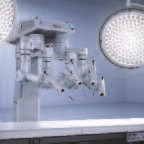
Robotic Surgeons & Surgical Technicians
Precision surgeries are now being performed using multi-armed robots, such as the da Vinci system at Trinitas. Articulated arms are fitted with instruments, providing virtually unlimited degrees of motion and precision, while another holds a high-definition 3D camera to assist the surgical team and minimize error. As more and more medicine is practiced remotely—and as more sophisticated surgeries are executed robotically—robotic surgeons and their supporting technicians will need to possess both the knowledge of traditional physicians and surgeons and technical proficiency with their new high-technology equipment.
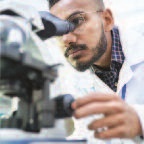
Organ Transplant Engineer
In the United States, dozens of people die every day waiting for transplants that can’t take place, primarily due to the shortage of compatible donated organs. Last February, scientists at the University of California, Davis successfully cultured sheep embryos containing human cells—a major step forward to the goal of growing complete human organs inside animal hosts. Xenotransplantation will eventually be the primary source of transplant materials, designed and engineered to ensure 100% effectiveness and 0% probability of autoimmune rejection. Engineers of xenotransplant organs will occupy a critical role in future medicine.

Cyber Security Specialist
Given the relentlessly increasing number of security breaches of both government and private corporate networks, more and more cybersecurity experts will be sought to counter future threats to the online universe that we love and depend on. Calling all keyboard warriors! How cool would it be to work for the CIA (or PayPal), catching truly bad guys?

Security/Police Officer
Security and police officers have existed pretty much since ancient Babylon. In the near future, they’ll no longer need to pull long hours at the station house or cruising streets in a squad car, as they’ll be able to respond even faster and more effectively with robot “muscle” backup— advanced audiovisual surveillance capabilities, and airborne vehicles.

Space Tourism Guide
We’ve been waiting for it since 2001: A Space Odyssey, but at last, space travel and tourism for the common man are drawing closer and closer to realization. By 2050, a trip to a space station or even the moon will most likely be as common as a business junket to Cincinnati or a family holiday to Orlando. Those working to make their passengers comfortable with these probabilities will require strong people skills, similar to those of current air flight attendants, such as knowledge of safety procedures and resistance to motion sickness and vertigo.
Augmented/Virtual Reality Designer/Engineer/Architect
Marketing and retail companies are already actively seeking augmented/virtual reality designers, engineers and architects to create interactive, immersive experiences for their consumers. Those with expertise in AVR technology—combining computer-generated images with physical environments— will be hot prospects in the job market, conceiving and creating for everything from job training to outdoor advertising to (one day) Star Trek “holodeck” experiences.

Automated Construction Specialist/Architectural Engineer
Using innovations like 3D modeling/ printing and advanced robotics, architectural engineering and construction in the future will be nothing short of revolutionary. Specialists in these fields will be equipped to build human habitats straight out of science fiction. Imagine apartment buildings perched thousands of feet in the sky like the Jetsons’, mobile floating “sea stead” towns in the oceans or subterranean Logan’s Run-esque cities.

Data Analyst/Future Forecaster
For a hundred years or more, since the founding of IBM or maybe since the Age of Enlightenment, analysts of empirical data have been instrumental in advancing humanity’s understanding of itself. And they will continue to do so. They are the high priests of our culture, producing the charts and graphs that explain the present and predict the future. Where have we been? Where are we now? Where are we going? Will stock and bond prices soar or plummet? Will we run out of fresh produce, water, petroleum or gummi bears? Will there a war? Don’t ask me…call your analyst.

Genetic Counselor
The term “designer baby” isn’t anything new. Genetic and genomic scientists are already able to detect many inherited abnormalities that may jeopardize a child’s health or quality of life. Doctors and scientists generate the raw information, but genetic counselors will be needed to help parents make the best choices for themselves and their posterity. About 2,000 professionals are currently recognized by the American Board of Genetic Counseling. Look for that number to skyrocket as we learn more about ourselves at the molecular level.

Transportation Engineer
Autonomous personal aircraft, pneumaticintercontinental trains, maglev monorails, moving sidewalks—science fiction novels, movies and television programs (as well as magazines like Popular Mechanics) have dangled images of such futuristic vehicles before our starry eyes for decades. We are still fascinated by their possible realization. Transportation engineers will be the ones to make them happen. Most of us spend more waking hours working than with our families and friends. So, if I may argue, matching our personal strengths and aptitudes to our interests and passions, and choosing wisely what we work at (whether a profession, vocation, occupation or trade) is the most important existential decision any of us make in our lives. If what we do is indeed a big part of who we are, then the best advice we can offer to the young workers of 2050 is aspire to do what you love, and love what you do. In closing, I also think it’s worth considering the words of Saint Jerome: fac et aliquid operis, ut semper te diabolus inveniat occupatum. “Engage in some occupation, so that the devil may always find you busy.” In other words, if you sit around doing nothing, you’ll be more tempted to do questionable things. For those who love to do and make things, the world of 2050 should be a moveable feast of possibilities. If so, sit down to the table and order up.
Positive Deflation: Can It Happen?
As productivity increases by way of automation, material scarcity decreases. That means less and less of us will be needed to work at producing the materials for basic human survival, such as food, clothing, housing, energy, and transportation. These commodities will become so abundant that their prices will plummet…which means that everyone will be able to consume them for less and less money. Working simply to earn enough money to purchase them might soon be practically unnecessary. Economists call this Positive Deflation. Difficult as it may be to imagine today, in 2050 the goal of “freedom from want” may be achievable—and a fact of life for many of us. People will be empowered to pursue their unique individual talents and creative passions in the Brave New Economy liberated for the first time in human history from the fear of privation.

Recommended Reading (and Viewing)
If you’re interested in wrapping your mind around the twists, turns and unintended consequences of the future, I highly recommend immersing yourself in the work of some highly imaginative people who have already done a deep dive…
Sleeper • Woody Allen
I, Robot • Isaac Asimov
I Sing the Body Electric • Ray Bradbury
Fantasia/The Sorcerer’s Apprentice • Walt Disney
Futurama • Matt Groenig
Brave New World • Aldous Huxley
The Stepford Wives • Ira Levin
Player Piano • Kurt Vonnegut
Forget new car smell…new car safety features have become the industry’s most powerful selling tool.
by Sarah Lee Marks
As dinner-table proclamations go in our family, this was a huge one: “It’s time for a new car,” my 83-year-old mother said
“Why?” we all asked, in perfect unison.
“Your car has barely 21,000 miles, and it’s only four years old,” I pointed out.
“Six years old,” she corrected me, “and I want my last car to be fancy.”
I briefly considered demanding that she surrender her keys altogether…but then pictured my life as an official taxi driver. “Let me check my schedule for Tuesday,” I sighed.
I wanted some time to do my research before venturing onto a car lot. I started at the NHTSA.gov and Safercar.gov websites for the latest recalls, updates, and consumer complaints. My next online stop was www.iihs.org, the Insurance Institute of Highway Safety website. The drop-down menu on the crash avoidance page allowed me to compare cars—by year, make and model—for safety features. Then off we went.
“I just want to be able to see over the steering wheel,” Mom informed me, as we pulled into our first dealership.
“Agreed, but these new cars have some options that will accommodate your driving style,” I replied…and keep everyone else from getting hurt, I muttered to myself.
“Please show us your mid-size sedan with back-up camera,” I requested of Eddy, the salesman who greeted us at the door. Without asking our budget, credit score or what we might be trading, he led us to an electric blue four-door in the corner of the showroom, price tag fully loaded about $50,000. As Mom wedged herself into the driver’s seat, Eddy discreetly opened the door to a full 90- degree angle and raised the 8-way power driver seat. “This seat will tilt and support your lower back,” he informed her, adding that it had “a cushion extender for lower leg support on long drives.”
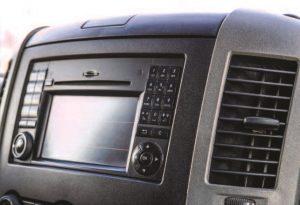 My shortlist of requirements included the aforementioned back-up camera—federally mandated in all new cars beginning 2018—as well as blind-spot alerts. However, it soon became evident that my request was a bit more complex. The nuances and names of the features on new cars are as diverse as the variety of makes and models. After a brief introduction to the car Mom had roosted in, Eddy led us to a car parked in a garage area off the showroom. “It is easier for me to demonstrate how well this car performs,” he said, as the garage door opened. “Let’s take a test drive.”
My shortlist of requirements included the aforementioned back-up camera—federally mandated in all new cars beginning 2018—as well as blind-spot alerts. However, it soon became evident that my request was a bit more complex. The nuances and names of the features on new cars are as diverse as the variety of makes and models. After a brief introduction to the car Mom had roosted in, Eddy led us to a car parked in a garage area off the showroom. “It is easier for me to demonstrate how well this car performs,” he said, as the garage door opened. “Let’s take a test drive.”
Smooth move, Eddy. He took the wheel with Mom up front and me in the rear. As he reversed into a parking spot on the lot, he pointed to the 7” screen on the dash. “These green, yellow and red-colored lines move to help you align with the parking space markings.”
“I wouldn’t trust that,” Mom snapped. “You should still look over your shoulder and use your mirrors.”
“This is an extra set of eyes,” Eddy responded, without missing a beat. Suddenly a beep sounded, getting louder and faster as he reversed toward the curb. “That’s the back-up camera working with the rear parking assist sensors.”
He touched the screen and the scene from the rear changed: “If you click on this square you get the 360- degree view, another angle shows below the bumper, which keeps your garage door from damaging it if you didn’t pull in far enough. This side shot will let you see someone approaching your car if you are parked in an isolated place.”
Eddy backed through the space, as if we were backing out of a spot. An SUV appeared on the dash screen several yards away. The beep started again. “Our car is going to stop rather abruptly in three, two, one,” he said, as it did. Not a jerking whiplash sensation, just a firm stop. “That is our Rear Cross-Traffic alert with emergency braking because you didn’t hit the brake.”
“Wow, I didn’t see them,” Mom cooed.
She and Eddy swapped seats and the test drive continued. Soon, a different sound chirped. “That’s the Blind Spot Monitor,” Eddy said, pointing to the passenger side mirror. A tiny image of two cars was flashing as a car in the next lane came alongside us. “The car has sensors in the wheels, which detect a car coming into your blind spot.”
“Can you turn off the noise, so it isn’t constantly beeping in heavy traffic?” I asked.
“Our car allows the owner to set that choice of alert, but I don’t know about the competition,” he replied, and then directed Mom onto the freeway.
“I don’t like the big trucks and merging,” she protested.
“You don’t have to be concerned anymore,” Eddy offered. “The Blind Spot warning will keep you safe when merging or changing lanes.”
As she merged into traffic the car sounded off again.
“That is the Lane Departure alert telling you that you’ve changed lanes without using your directional,” he said. “Do you know how many people don’t use their signals when changing lanes?”
“How does it know?” Mom asked.
“There is a camera facing outward from the front windshield,” Eddy explained, pointing behind the rearview mirror. “The camera reads the lane markings on the road as your travel. When your car edges over the line without using your signal, the car beeps and a picture of the car with a line on either side changes color from green to yellow. If you are about to cut someone off the color turns red and if you don’t correct yourself in seconds, the Lane Keeping Assistance pushes you back into your lane. Can you feel the steering wheel give a tug?”
 “Yes,” she replied, “and it feels like it is vibrating too.”
“Yes,” she replied, “and it feels like it is vibrating too.”
“The car warns you when you are edging the lane, in case you are falling asleep or are distracted,” he said. “In our cars, it vibrates the seat cushion, pulsates the steering wheel, and will flash a signal on the dash. If you do not correct the car in three seconds, the Lane Keeping Assist kicks in for you. You can set the amount of time before it reacts. Not all brands give you all these safety features in one package like ours.”
“Mom, I want to try the Automatic Emergency Braking if you’re okay with that?” I asked, smiling at Eddy. My mother and I switched seats.
“I’d like to show you how our Adaptive Cruise Control works before we head back,” Eddy offered. “With the adaptive cruise, you have to be going over 25 miles per hour to set the cruise control to the speed you want. Then you set the number of car lengths you want to maintain between you and the car in front of you. The set number of car lengths is also important when driving without cruise control—for the forward collision alert system and automatic braking.”
“Are you going let her demonstrate that too?” snickered Mom from the back seat.
“Remember the camera in front that reads the lanes?” Eddy said. “The car has a radar sensor mounted in the front grill facing forward. It is wired to the camera and car computer. When the sensor detects the car in front of you slowing down, the adaptive cruise slows the car by gently braking, to keep the number of car lengths consistent.”
Sure enough, after I activated the cruise from the steering wheel at our travel speed, the car automatically slowed with the traffic, then picked up speed as the distance between cars widened—without my having to touch either the brake or accelerator.
“And if that car in front stops suddenly,” Eddy said, “this car will stop even if you don’t hit the brake.”
“How?” Mom and I wondered aloud.
“The camera and sensors detect the car in front slowing down or suddenly stopped,” he explained. “The warning sound beeps loudly while the word BRAKE flashes in yellow and then red. In other brands, you may only get the impending danger warning sound and display on the dash. They charge extra for automatic or crash-mitigation braking. We include it in our safety tech package.”
Eddy was homing in on the close.
“Oh, look it’s flashing,” Mom squealed as I watched traffic ahead start to back up. Before I could react, the car was stopped.
“Normally,” Eddy explained, “you get the warning first, have time to apply the brake yourself or steer away if it is safe and you are awake. But if you had an emergency medical condition and couldn’t slam the brake, the car would do it for you. Did you feel the seat belt tighten? Oh, and the brakes are readied to deploy, just in case, to protect you.”
“I’m exhausted already,” sighed Mom, “but that was very impressive.”
“Does this only work with the adaptive cruise control on?” I asked, calming myself with yoga breaths.
“As a matter of fact,” he smiled, “our car is one of a few that has this same technology for a speed of only 5 miles per hour. This is where Pedestrian Detection on our Automatic Emergency Braking really stands out.”
“Pedestrian what?” I asked. “Did you say the car detects jaywalkers with their faces in their phones?”
Eddy looked somewhat taken back by my comment, but in true professional fashion Eddy regrouped with a retort of his own, “and scooter-rockets too.”
I considered the errant toddler or loose animal darting across my path.
“Does this car give directions?” Mom inquired.
It was a question I hadn’t thought to ask, given the navigation map splayed across the screen.
“As a matter of fact, that’s a great question,” Eddy smiled. “Our SOS-Concierge Response system will give you live turn-by-turn voice guidance to your desired destination, so you don’t have to type or voice-command if you don’t want to.”
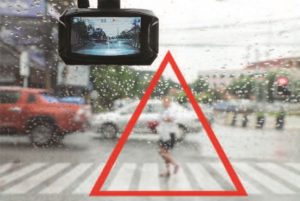 “So, if I’m lost, they tell me where to go?” Mom continued. “My friend Sally has that, and it came in handy the other day.”
“So, if I’m lost, they tell me where to go?” Mom continued. “My friend Sally has that, and it came in handy the other day.”
Before I could ask her for details, Eddy saw his opening and took it: “Mrs. B…if you were in an accident—not your fault, of course—but you couldn’t answer the 24/7 emergency operator, our trained operator would call 911 and dispatch a first responder.”
Eddy pointed to a red button on the rear-view mirror. “This blue one here is for the concierge service: directions, reservations, and mobile wi-fi hotspots. We use satellite technology to locate you, even in the desert.”
“Does this require an annual subscription?” I asked.
“It’s free as long as the car is under warranty.” Eddy smiled.
As we returned the car to the dealership, Mom gave Eddy a nod of approval. She looked at me and pointed towards the door. “Do you think you can get him down to $30,000.00 if we pay cash?” she whispered.
“A $20,000 discount is probably beyond my magic skills Mom,” I replied, “But let’s go home and talk about everything we saw today. Then we’ll decide what you really need.”
“Honey, this car’s got to get me to ninety-five,” she laughed, “I need everything.”
Crunch Time

I had no sooner delivered my mom and her new car home when I was the victim of unspeakable irony. Parked at a gas pump, wallet in hand, I noticed a minivan inching backward towards me.
“Stop! Stop! Stop!” I screamed, doing my worst imitation of a cheerleader.
Then Bang.
The van crunched into the front of my car and stopped. A young woman’s face craned out the driver’s window of the offending vehicle.
“What were you doing?” I asked in my outside voice, pointing to our bumpers. “Didn’t you see me waving at you and screaming to stop? Your van has rear sensors and a back-up camera. How does this happen?”
“I was handing my daughter her drink,” she muttered, “This is my husband’s car, he must have the sensors turned off.”
“You were driving backwards, distracted?” I said in disbelief as she got out of the car to look at the damage.
“I’ll take care of the repairs,” she replied as she handed me her license and insurance.
“Great,” I said. “We’re both going to have bad CarFaxes now.”
“Huh?” she sniffed.
“When you have insurance fix your car from a crash, the repair shows up on CarFax as an accident,” I explained. “The bad CARFAX report lowers the resale value of your car. It’s called Diminished Value, and it requires a separate claim to your insurance, to recoup the loss in price at trade-in or sale time.” I took pictures of all her contact information, insurance and the scene where my car sat with a broad white stripe across the front.
“Oh, I’m really sorry,” she said, “I had a lot on my mind with school starting this week.”
“Well, consider this a teachable moment,” I sighed. At least I didn’t have to go shopping for a(nother) new car.
Editor’s Note: Sarah Lee Marks is a car concierge and automotive consumer advocate for all things car-related. Sarah lives in Henderson, Nevada with her husband, Norman. You can ask her car questions at her website:www.mycarlady.com.
Edge takes you inside the area’s most creative kitchens.
 Paragon Tap & Table • Beef Ramen
Paragon Tap & Table • Beef Ramen
77 Central Ave. • CLARK
(732) 931-1776 • paragonnj.com
As we constantly introduce new flavors from around the world to our customers at Paragon Tap and Table we have added an Asian inspired Noodle Dish with a touch of the south. Our beef ramen noodle showcases all the characteristics of a traditional ramen but twisted with the smokiness of the smoked beef brisket.
— Eric B. LeVine, Chef/Partner
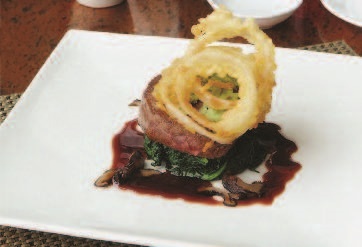
Arirang Hibachi Steakhouse • Wasabi Crusted Filet Mignon
1230 Route 22 West • MOUNTAINSIDE
(908) 518-9733 • partyonthegrill.com
We prepare a crusted 8-ounce filet mignon served with gingered spinach, shitake mushrooms, and a tempura onion ring.
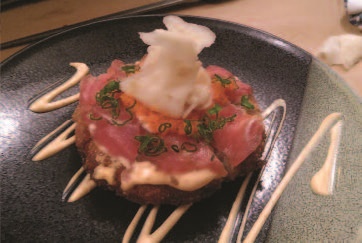 Daimatsu • Sushi Pizza
Daimatsu • Sushi Pizza
860 Mountain Ave. • MOuNTAiNSiDE
(908) 233-7888 • daimatsusushibar.com
This original dish has been our signature appetizer for over 20 years. Crispy seasoned sushi rice topped with homemade spicy mayo, marinated tuna, finely chopped onion, scallion, masago caviar, and ginger. Our customers always come back wanting more.
— Chef Momo
The Barge • Cioppino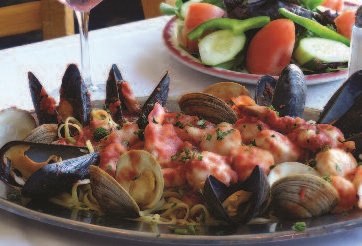
201 Front Street • PERTH AMBOY
(732) 442-3000 • thebarge.com
Our Cioppino, the signature dish of San Francisco, features a fresh, healthy selection of
clams, mussels, shrimp, Maine lobster and Jersey scallops—drizzled in Greek virgin olive
oil, with fresh garlic and white wine—over homemade Italian linguini. I know it will become
one of your favorite dishes.
— Alex Vosinas Chef/Owner
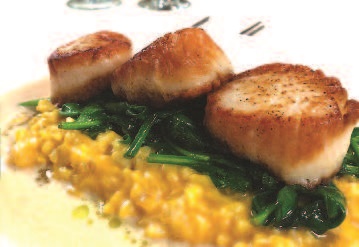 Luciano’s Ristorante & Lounge • Warm Goat Cheese Salad
Luciano’s Ristorante & Lounge • Warm Goat Cheese Salad
1579 Main Street • RAHWAY
(732) 815-1200 • lucianosristorante.com
Pan-seared scallops over butternut squash risotto and wilted spinach, finished with a brown butter emulsion. This is one of the signature dishes featured on our menu since we opened 10 years ago.
— Joseph Mastrella, Executive Chef/Partner
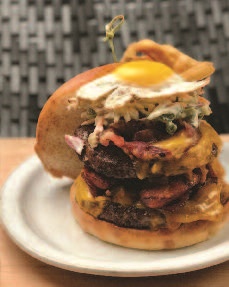 Morris Tap & Grill • The Monster Burger
Morris Tap & Grill • The Monster Burger
500 Route 10 West • RANDOLPH
(973) 891-1776 • morristapandgrill.com
As the leader in the gastropub world in New Jersey, Morris Tap and grill has been
providing creative, quality, fresh certified burgers for over 6 years. Here’s an example of what we do creatively with our burgers, The Monster Burger. Two certified angus beef burgers topped with chorizo sausage, slaw, bacon, cheddar cheese and a fried egg!
— Eric B. LeVine, Chef/Partner
 Garden Grille • Grilled Chicken Paillard
Garden Grille • Grilled Chicken Paillard
304 Route 22 West • SPRINGFIELD
(973) 232-5300 • hgispringfield.hgi.com
Grilled chicken paillard with roasted corn, asparagus, cauliflower, baby arugula and grape tomato, extra virgin olive oil & aged balsamic.
— Chef Sean Cznadel
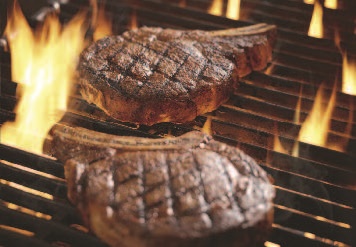
LongHorn Steakhouse • Outlaw Ribeye
272 Route 22 West • SPRINGFIELD
(973) 315-2049 • longhornsteakhouse.com
LongHorn Steakhouse of Springfield is celebrating its One Year Anniversary. Come celebrate with us! Join us for Lunch or Dinner. We suggest you try our fresh, never frozen, 18 oz. bone-in Outlaw Ribeye – featuring juicy marbling that is perfectly
seasoned and fire-grilled by our expert Grill Masters.
— Anthony Levy, Managing Partner
 Outback Steakhouse • Bone-In Natural Cut Ribeye
Outback Steakhouse • Bone-In Natural Cut Ribeye
901 Mountain Avenue • SPRINGFIELD
(973) 467-9095 • outback.com/locations/nj/springfield
This is the entire staff’s favorite, guests rave about. Bone-in and extra marbled for maximum tenderness, juicy and savory. Seasoned and wood-fired grilled over oak.
— Duff Regan, Managing Partner
 Arirang Hibachi Steakhouse • Volcano Roll
Arirang Hibachi Steakhouse • Volcano Roll
23A Nelson Avenue • STATEN ISLAND, NY
(718) 966-9600 • partyonthegrill.com
Hot-out-of-the-oven, crab, avocado and cream cheese rolled up and topped with a mild spicy scallop salad.
 Ursino Steakhouse & Tavern • House Carved 16oz New York Strip Steak
Ursino Steakhouse & Tavern • House Carved 16oz New York Strip Steak
1075 Morris Avenue • UNION
(908) 977-9699 • ursinosteakhouse.com
Be it a sizzling filet in the steakhouse or our signature burger in the tavern upstairs, Ursino is sure to please the most selective palates. Our carefully composed menus feature fresh, seasonal ingredients and reflect the passion we put into each and every meal we serve.
Do you own a local restaurant and want to know how your BEST DISH could be featured in our Chef Recommends restaurant guide?
Call us at 908.994.5138
The Connie Dwyer Breast Center opens at Trinitas.
By Yolanda Navarra Fleming
Connie Dwyer, a breast cancer survivor from Summit, was not shocked by her breast cancer diagnosis back in 1999. In fact, she almost expected it, in spite of the fact that her parents lived long, cancer-free lives and she was not considered high-risk. But there were other factors that came into play. For instance, her father smoked cigars. She grew up in Niagara Falls, NY near chemical plants. Connie even smoked for a short time when she was in college. Perhaps the most interesting fact of all was her older brother’s breast cancer diagnosis five years prior to her own. He lived for 17 years without traditional therapies until it spread to his lungs and eventually his brain, before he died.
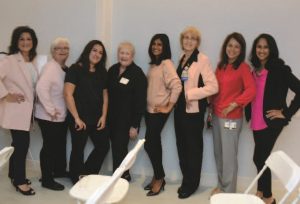
Photos courtesy of Grace Photography
“Early screening is the most important thing,” she said. “I have friends who don’t like doctors and don’t go to the doctors. But I always felt that I was going to get breast cancer. I had a dear friend when I was in my early 30s, who was 10 years older, who passed from breast cancer and because of that, it was always on my mind. So I always went for my mammograms. And then when my brother was diagnosed, I would get a mammogram, see a breast surgeon and my gynecologist, so I was seeing someone four times a year because I just had a feeling.”
 The year she was diagnosed, it had only been 11 months since her previous mammogram, which meant it would not be covered by insurance. She paid for it and that’s when it was discovered. “Had I waited and we went away for the summer like we usually did, it would have been another four months. My instincts were good
The year she was diagnosed, it had only been 11 months since her previous mammogram, which meant it would not be covered by insurance. She paid for it and that’s when it was discovered. “Had I waited and we went away for the summer like we usually did, it would have been another four months. My instincts were good
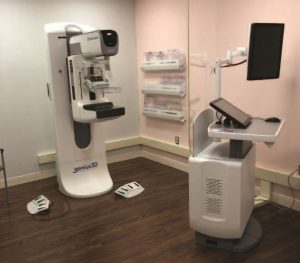 She had a double mastectomy and chemotherapy, and shortly after being released from the hospital, her oldest daughter learned that she had a lump that needed to be removed. It was benign and she has been fine ever since
She had a double mastectomy and chemotherapy, and shortly after being released from the hospital, her oldest daughter learned that she had a lump that needed to be removed. It was benign and she has been fine ever since
Her experience inspired her to go to the next level
“During my chemo, there was a young girl who took a bus to get her chemo. She was a single mother with two children who took two buses to get to work after chemotherapy. I thought to myself, if you don’t have family around to help you, can you imagine how much harder it would be? That’s what inspired me to do what I do. And what I do could not be done without the board I have. I couldn’t do this on my own. It’s everyone who works with us that makes the outcome possible
Connie and a dedicated group of friends began a grassroots effort, where she worked tirelessly to create awareness and raise funds. By 2005, the doors of the first Connie Dwyer Breast Center had opened at St. Michael’s Medical Center in Newark. However, when St. Michael’s was purchased by a for-profit, Connie began looking for another non-profit hospital for a new center
“What inspired us to partner with Trinitas Regional Medical Center is that our missions are so similar—to serve the poor and vulnerable women in the community. When I walked into Trinitas, not only was it one of the cleanest hospitals I’ve been in, everyone was happy. That in itself made us want to be there.”
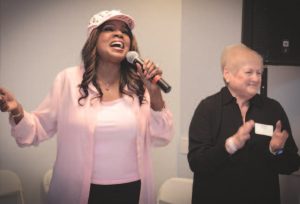 Just in time for Breast Cancer Awareness Month, the $3.4 million Connie Dwyer Breast Center opened at Trinitas on October 1 with a ribbon-cutting ceremony featuring Connie Dwyer, the Trinitas leadership, local officials such as Elizabeth Mayor Christian Bollwage, and a special guest appearance by Grammy award-winning singer Gloria Gaynor (left, with Connie), who sang “I Will Survive
Just in time for Breast Cancer Awareness Month, the $3.4 million Connie Dwyer Breast Center opened at Trinitas on October 1 with a ribbon-cutting ceremony featuring Connie Dwyer, the Trinitas leadership, local officials such as Elizabeth Mayor Christian Bollwage, and a special guest appearance by Grammy award-winning singer Gloria Gaynor (left, with Connie), who sang “I Will Survive
Trinitas has partnered with The Connie Dwyer Breast Cancer Foundation to bring a highly empathic approach to screening, diagnosis, treatment, and community outreach and education to all women, regardless of financial status, in a brand new facility that evokes comfort and a sense of well-being
 The Breast Center, staffed with board-certified bilingual specialists, offers the most up-to-date equipment and services available, such as 3D imaging, which allows radiologists to view the breast tissue in several layers. This breakthrough technology can detect 41 percent more invasive breast cancers and can reduce false positive results by up to 40 percent.
The Breast Center, staffed with board-certified bilingual specialists, offers the most up-to-date equipment and services available, such as 3D imaging, which allows radiologists to view the breast tissue in several layers. This breakthrough technology can detect 41 percent more invasive breast cancers and can reduce false positive results by up to 40 percent.
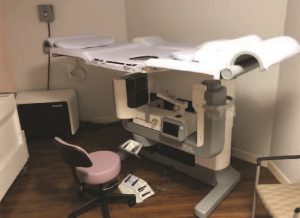
The American Cancer Society recommends that all women over the age of 40 have regular breast exams and mammograms. Most women who undergo screening will be healthy and not require further services until their next scheduled screening. However, patients who require continued care will meet with a Breast Navigator, a highly trained guide who answers questions and assists through the process of diagnosis and treatment.
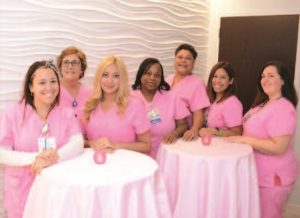
Gary S. Horan, FACHE, President and CEO of Trinitas, says, “With the generosity of Connie Dwyer, the new Connie Dwyer Breast Center at TRMC is a beautiful, calming and comprehensive center for women in our community to have everything from their yearly screening mammograms to the latest diagnostic studies. In addition, it is a one-stop shop where care can be coordinated for the patient among our dedicated, compassionate multidisciplinary care team.”
In November 2017, Connie was diagnosed again with breast cancer.
“That was shocking to me, almost more shocking than the first time,” she says. “It had been 18 and a half years. I was still going every six months to the oncologist. I was very sad. I felt badly for my girls, my husband, and my 12 grandchildren. But they were very inspirational to me. They talk about how strong I am and it makes me want to be strong.”
Her strength, at 75, is remarkable, in spite of cancer. “I’m still here. On many days I feel good. I might have to nap in the afternoon. I do complain, but in the big picture, how lucky am I? Within us there’s a strong drive to stay alive and be happy. I am really lucky to have so many good people around me. It’s amazing how good people can be. It makes me hopeful for the future.
Art historian Tova Navarra has been producing, teaching and writing about art since the 1960s. Her own work—in oils, acrylics, pastels and a wide array of media, including photography—has been featured in major shows throughout the tri-state area. Navarra’s evolving style reflects her academic and artistic curiosity, with echoes of the past, present, and future.
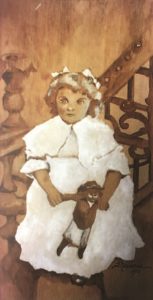
Portrait of Ivy
sepia watercolor on wood, 1975
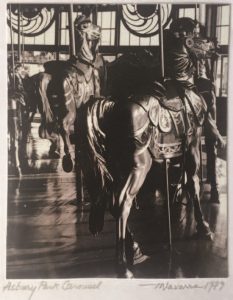
The Asbury Park Carousel
photograph, 1979
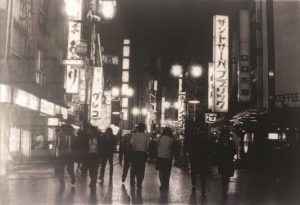
All you have to do is step into the light
photograph, 1984
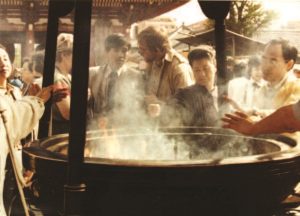
Kamakura
photograph, 1984

Daughter in a Sunhat
pastel on board, 1984

Piaf
photograph, 1991

How Ya Gonna Keep ‘Em Down on the Farm (after they’ve seen Paree)
mixed media painting, 2007

Bells and Whistles
abstract collage on board, 2008

Nude with Physics
Sharpie on paper, 2012

The Social Worker Arrives
mixed media, 2013

Tova Navarra served as an art critic for the Asbury Park Press for 14 years. She authored New Jersey Artists Through Time in 2015 and is currently completing work on New Jersey Masters: A New Legacy of Visual Arts—her 33rd book. For more insight into her life and work, visit edgemagonline.com.
Jodie Whittaker, the first actress to play Doctor Who
Was there a jar on the set where people had to pay a pound when they referred to the Doctor with male pronouns?
No, there wasn’t [laughs]. But do you know, I was guilty of it when I was auditioning. Trying to learn my lines, I kept going Ah it’s so hard because he says this line. And I thought, Man, we’re indoctrinated to not ever put ourselves a little bit higher.
How much of a “woman’s touch” do you bring to the Doctor?
I have never approached a role thinking How would a woman play this role?…because I just am one. And I don’t know if a guy has ever gone How would a guy do this scene? You just are, and it’s your point of view. Essentially, I suppose my energy and my approach to this is coming from a very instinctive place, which feels genderless to me because it’s never been necessarily ingrained in me that that’s a specific way that a woman behaves and a specific way a man behaves. The best thing about The Doctor is I’m not playing either [laughs]… I’m an alien!
Obviously, you are providing a great model for young girls watching the show, but what would you say to young boys who might be watching the series for the first time?
That it’s okay to look up to women, and that that is exciting and not to be feared. That’s the thing that we all feel—this is a show for everyone. When we were growing up, there weren’t necessarily people on television that looked like us or sounded like us. I suppose it’s just that your heroes don’t have to tick the same box. But it’s 2018, I mean the fact that we are having these conversations and also—as a woman being the front of a show—it will be really exciting when women aren’t treated as a genre, you know? Just as a cast member. If you lead a show, it doesn’t mean it’s “for women.” I’ve been thrust into kind of a genderless role, which is incredible. But also, you know, let’s not have this conversation in 2020, hopefully.
When you first found out you got the part, what was it like keeping that secret from friends, family…and the world?
It was particularly hard keeping it from your close friends and family. Knowing I was moving to Wales [where the series is shot], and getting the question Do you want to do that next month? I was, like, Er… I don’t know, I might be a bit busy. I just had to kind of make out that I had a lot of social events going on.
Were you nervous about fan reaction?
I’m not on social media, so I chose to think it was 100 percent positive and there were no negative comments [laughs]. But I think actually being the first woman to play the Doctor is incredibly liberating. With this role—and ask any of the previous Doctors—the rules are out of the window because the most wonderful thing is that you regenerate. So you can bring everything new, everything from previous, you can make it your own and stay loyal to it. Getting a woman doesn’t change that.
Editor’s Note: Doctor Who has been produced by BBC since 1963 and over 800 episodes have aired. Jodie Whittaker is the twelfth Doctor Who. The sci-fi series has had a devoted, decades-long following in the U.S. and new episodes run on BBC America. This Q&A was conducted by Lucy Allen of The Interview People. When she’s not interviewing celebs you’ll find her and her dog, Cindy, on the beach in Santa Monica, CA.
Everybody loves Brad Garrett. Whether he’s playing a smart guy, a dumb guy, a nice guy or a not-so-nice guy, it’s difficult to root against him. Garrett is a towering talent (for the record he stands 6’ 8½”) with an unmistakable voice and the uncanny ability to inhabit characters of all shapes and sizes. A groundbreaking stand-up who earned his spurs touring with the Rat Pack, he rocketed to fame as Robert Barone, the overlooked and under-appreciated older sibling of Ray on Everybody Loves Raymond—a role for which he earned five Emmy nominations and won three Emmys as Best Supporting Actor in a Comedy. His skill as a mimic and impressionist has served him well as a go-to voiceover actor and earned him Emmy and SAGnominations for his portrayal of Jackie Gleason in the 2002 biopic Gleason. Needless to say, Garrett cannot resist a challenge. Gerry Strauss checked in with him prior to the premiere of ABC’s Single Parents in September, in which Garret tackles yet another original character: a wealthy widower raising twin daughters.

BradGarrettComedy.com
EDGE: Fans first got to know you from your appearances on Star Search.
BG: Star Search was in ’83. I was young, 23 years old. You had a minute-and-a-half of stand-up to do. That was it. I was going against guys that were a lot more schooled in stand-up, that had been around a lot longer—and were probably better acts, to be honest. But one thing I did have was that my stuff was a lot of quick one-liners. I did some dead-on impressions back in those days, and when you had a minute-and-a-half, it hit quicker than a guy doing a gag about an airline or his parents or whatever, because 90 seconds is a ridiculous amount of time. I mean, you’re opening is almost your closing. After winning Star Search, I got booked on The Tonight Show—I’m sure because of the connection that Ed McMahon had.
EDGE: What kind of impact did the Carson spot have on your career?
BG: Back in those days, if you had a great set, like a Jerry Seinfeld or a Gary Shandling did, you’d have a development deal the next day. What it gave me was an incredible opportunity to do a stand-up tour opening for some major acts. By doing that, I really honed my craft because when you’re an opening act, no one wants to really see you. So you’re going out in front of thousands of people with nothing but the ability that you have, or do not have that night. By going on the road with these big names, it really was [comedy] school. I came back a different stand-up three years later.
EDGE: You opened for some iconic talent. Frank Sinatra, David Copperfield, Smokey Robinson, Sammy Davis Jr.—it goes on and on. Do you remember anyone giving you advice that helped you become a better all-around performer?
BG: Well, I think a lot of it was being able to sit in the wings and watch a Sammy Davis Jr., who is maybe the most talented person I have ever seen to this day. They used to call him “the triple threat” because he could do everything. He could sing, he could dance, he could act. Phantom of the Opera had just come out when I was opening for Sammy, and he did this scene from Phantom that was just chilling, unbelievable. He was actually supposed to play the Phantom in London before he got sick. And to sit there and watch Sinatra with a 22-piece orchestra…
EDGE: What was it like working with him in the latter stages of his career?
BG: He’d kind of go in and out. I would have to keep introducing myself every other time I would open for him. And he kept calling me Greg Barrett. I just rolled with it because I didn’t have the [courage] to correct him. You know, Frank Sinatra. You don’t want to correct him [laughs]. You end up in a box. My mom would go, “Why don’t you just sit them down and go, “Frank, I’m Brad.” And I’d go, “Yeah mom. I’m going to sit Frank down. I’m going to have a sit-down with Sinatra. That’s going to go over well with Jilly [Rizzo, Sinatra’s right-hand man].” I think that, in a small way, I was around this part of show business that just doesn’t exist anymore. And so, I hope we learned some showmanship while they were here because they were very welcoming into their world. Sammy was so incredibly gracious. When he played a hotel on the strip, he would invite everybody up and down the strip, whether you were a backup singer or a dancer or a headliner or an opening act. And he’d rent out the local theater in Vegas or Tahoe, and he’d invite everyone that was in the entertainment industry and throw a party. It was just so great to be around that because that era is gone, obviously.
EDGE: A lot of people are unaware that you started doing voiceover work around this period, in the early ’80s. How did you find your way into that line of work?
BG: I think a lot of that just came from the impressions I was doing in my stand-up on TV. The different voices, the different ranges. I’ve always had a voice that sounded like a guy talking in a tube. I’ve always kind of had this bottom to it. I started on Saturday morning cartoons, and I was either playing a thug or a burglar or whatever. And that kind of just led from one thing to another. I’m very grateful for what I’ve done because there’s really only a handful of brilliant people out there that can do a hundred voices and fifty sounds. I’m limited. But I got to work with some great voiceover guys, like Jim Cummings, who I just did Christopher Robin with. I am a huge fan of animation, and I think when you grow up a lonely kid you have a lot of imaginary friends…[laughs] as I still do.
EDGE: Where did you find inspiration for the Robert Barone character on Everybody Loves Raymond?
BG: You know what’s funny? I had to fight for that audition. They just didn’t see me doing it. Even Ray was like, “Nah, not the guy from Star Search”—which I understand, because no one wanted a giant. But the minute I read the script, I begged my managers at the time. I said, “I know this guy!” The minute I read it, I just had a very different way of playing it. They were reaching out to a couple of other actors and I begged to just go read for the creator, Phil Rosenthal. They wanted a Danny DeVito type, a little pit bull guy. The cop brother in real life was shorter than Ray and very jealous of Ray. That line Everybody Loves Raymond came from Ray’s actual life after he won an award for his stand-up. His brother saw the award he got and goes, “Well, that’s great. I just got shot at today, but I guess everybody loves Raymond.” So that’s how that ended up as a line in the pilot and the show’s title. I wanted to play Robert the opposite of my size. As an actor, I had this thing I used to use. I used to say that Ray’s an only child and they forgot to tell Robert. That was my little thing. But there’s a fine line of not playing anger, but playing frustration. So they kept Robert frustrated, and in a lot of ways, he had the upper hand in certain episodes over Raymond, but the family wouldn’t allow it. So, there were a lot of fun things to play. But I owe a lot to the writing. The writing was so good on that show. They knew how to write for this character so well.
EDGE: And what a cast.
BG: Of course. The cast had a chemistry—which is what’s exciting for me about the new show I’m doing, Single Parents. We just had this chemistry in the pilot that’s very rare. You can only fake it so much, but when you are able to tag onto another person’s timing or reaction, it’s pretty incredible.

ABC Television
EDGE: Single Parents offers another unique role for you within an ensemble cast…yet at the same time, you’re still touring and doing one-man shows. At this stage of your career, do you crave that level of variety in your work?
BG: I get bored easily. I’m a little ADD…or a lot ADD. And I’m at that point in my life that I want to do what I love or I want to do something that I’m really attracted to. When I read the pilot for Single Parents, I was like, Boy, this Douglas guy. This is a very different character for me. This is something I haven’t played on TV. I was really intrigued. Then I found out that Taran Killam was part of it, and I was such a fan of his on SNL. Then I met the guy and he’s just one of the kindest humans. I was like, Well, this is a no-brainer. I hope we can make this happen. But I do like the different avenues. I just got done doing I’m Dying Up Here, which was a very dramatic role on the Showtime show that they wrote for me. And it was something that scared me at first. I was like, Man, this guy is super dark. I loved the role. I couldn’t wait to play him. I was very grateful that they would write something like that for me because that doesn’t come along for comedic people often. I’m kind of at the point in my life where it’s fun to do things I haven’t done yet.
EDGE: I have to ask. With so many classic TV shows making comebacks in the past few years, what do you think Robert Barone would be up to in 2018 if Everybody Loves Raymond returned to the airwaves?
BG: He’d probably be running from the law at this point [laughs]. I would say that Robert is probably divorced right now. And maybe living with Ray.


